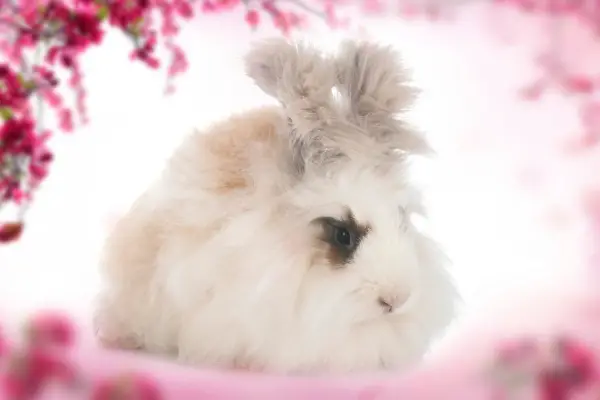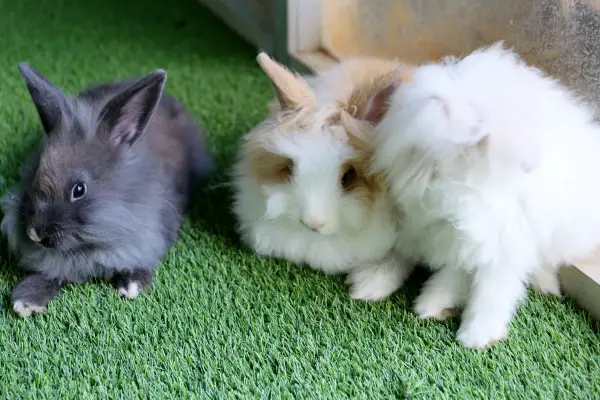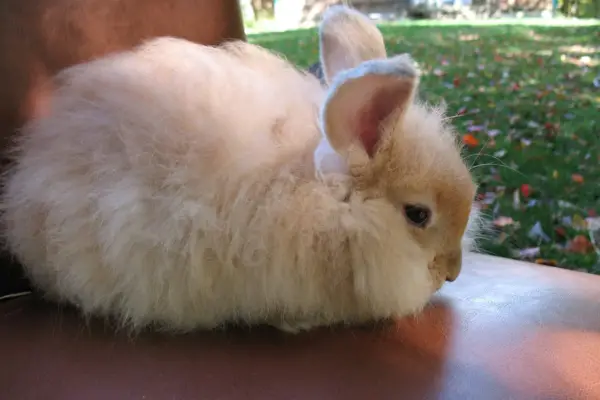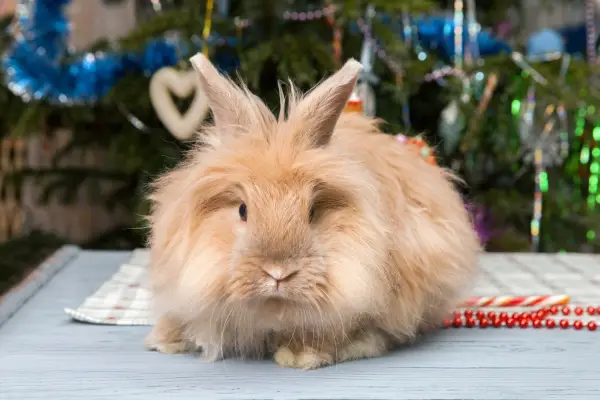The exquisitely soft, fluffy wool of English Angora rabbits is prized by spinners and felters alike. But English Angoras have more than their fiber going for them—these charming rabbits also display a stunning spectrum of coat colors and patterns.
From the inky black of a dark ebony rabbit to the pristine white of a ruby-eyed white, English Angora rabbits showcase over a dozen recognized color varieties.
Understanding Angora rabbit color genetics provides key insights into the inheritance patterns and possible rarities that may emerge in a breeding program.
Adhering to the American Rabbit Breeders Association’s (ARBA) official show standards for accepted colors allows breeders to showcase their best specimens at competitions. And the natural colors of Angora wool lend beautifully to dyeing and crafting with the spectacular fur these rabbits provide.

Recognized English Angora Rabbit Colors
The ARBA officially recognizes nine distinct colors for English Angora show rabbits: black, blue, chocolate, lilac, chestnut agouti, copper, red agouti, REW (ruby-eyed white), and pointed white. Additionally, the chestnut agouti and red agouti groups include several color variations.
Black: This is one of the most common and striking colors seen in English Angoras. The fur appears shiny black from roots to tips. The black gene is dominant.
Blue: A dilution of black, blue Angoras display a dark slate-gray coat color across their entire coat. The coat may have a bluish cast in bright lighting.
Chocolate: A warm brown color, from a medium milk chocolate shade to dark chocolate. The chocolate gene is recessive.
Lilac: The dilute version of chocolate, lilac rabbits display a pale milk chocolate color. The fur is a muted dove gray with a brownish tint throughout the coat.
Chestnut Agouti Group: This broad group includes silver chestnut, silver fawn, chinchilla, squirrel, and lynx. These ticked agouti pattern rabbits feature white-banded hairs mixed with colored guard hairs.
Red Agouti Group: From bright orange to a deeper burgundy red, this includes agouti colors of yellow, orange, and red shades. Variations include cinnamon, fawn, and opal rabbits with ticking.
REW (Ruby-Eyed White): Pristine white fur with bright ruby red eyes, these rabbits lack pigment across their entire body. The white spotting gene masks all other color genes in REW rabbits.
Pointed White: Featuring white fur across most of their body, these rabbits exhibit color on the ears, feet, tail, and face “points,” similarly to a Siamese cat pattern. They may be black, chocolate, or blue pointed whites.

Understanding Angora Color Genetics
The interaction between dominant and recessive genes determines whether particular color genes are expressed visually in Angora rabbits or hidden from view. Additionally, the agouti pattern of ticked fur mixes white bands with colored guard hairs. And dilute genes modify basic colors into softened pastel hues of blues and lilacs.
Breeding colored Angoras allows for surprises and discoveries when recessive genes suddenly reveal themselves after generations of hiding unseen. Meticulous breeders may specifically work toward developing or resurrecting particular rare colors such as tortoiseshell, steel, or silver marten variations. These specialty Angoras may fetch higher prices from discerning enthusiasts seeking new color mutations.
Showing English Angora Rabbits
English Angora rabbits entered into ARBA-certified shows must meet meticulous standards regarding their coat condition, build, weight, and coloring. The judging process closely analyzes color uniformity, clarity, consistency, and quality across the rabbit’s entire coat.
For self-colored Angoras, any white spotting or misplaced ticking will count against competition prospects. However, normal color variations apply differently for specific color groups, with allowances for natural maturation changes as rabbits pass through molts.
For agouti-patterned rabbits, distinct color banding is expected and variations are assessed based on clarity and proportionality of ticking throughout the coat.

Angora Rabbits as Fiber Animals
English Angoras shine brightest in the hands of spinners, felters, knitters, crocheters, and other fiber artists. While show breeders aim for color purity and consistency, those keeping Angoras for their wool can delight in the surprises that emerge by blending various colored fleeces.
The exceptional length, fineness, and softness of English Angora fur adapts beautifully to yarn and textile creations. Naturally colored wool can produce items reflecting the original rabbit coat shades. And creative talents additionally embrace dyeing opportunities for nearly endless color combinations spinning marvelous rainbow art yarns or weaving vibrant tapestries.
Whether spun solo or intermixed with other luxury fibers like cashmere or qiviut, English Angora fur promises stunning heirloom results. Each shaded staple carries pigment particulates allowing for luminous, saturated hues following natural dye steeping.
Conclusion
English Angora rabbits present a dazzling palette of at least nine accepted ARBA show colors, with additional variety found among breeder-developed specialty colorations. Their genetics allow for surprises during breeding programs targeting particular results. And those raising them for fiber can blend, overdye, or embellish the naturally pigmented wool for colorful craft creations reflecting the varied coat hues of this multipurpose rabbit breed.

